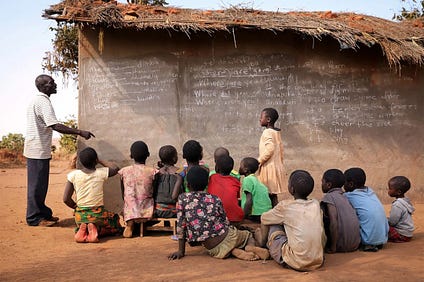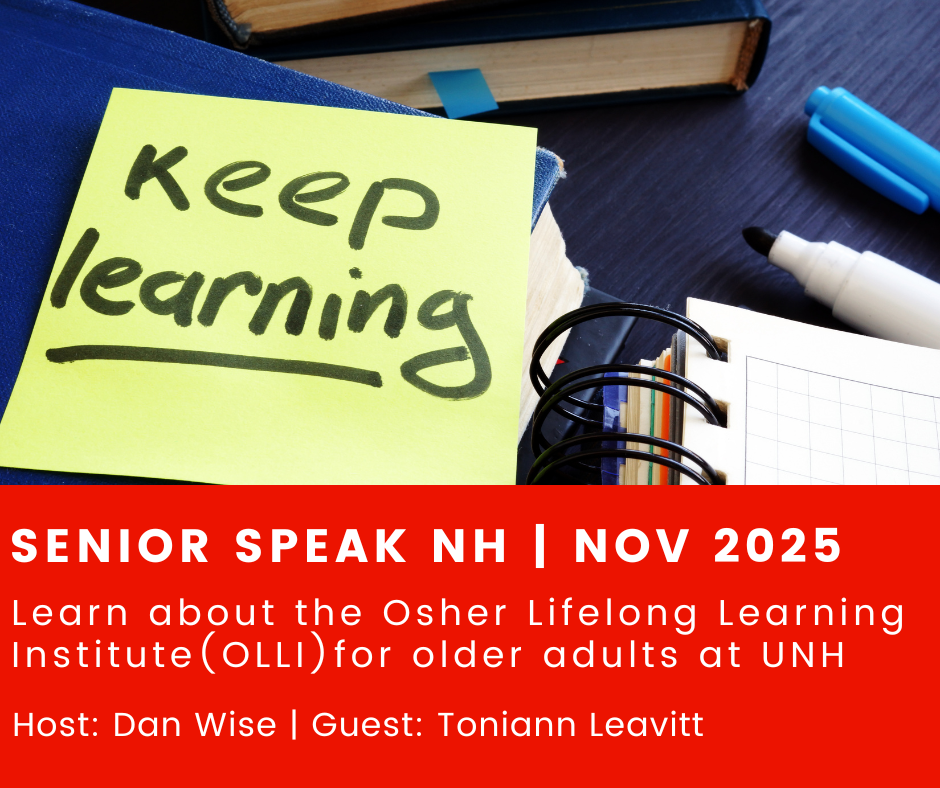Adult literacy programs strengthen B.C.’s workforce, communities – BC Gov News

Provincial Investment in Adult Literacy Aligns with Sustainable Development Goals
Introduction: The Community Adult Literacy Program (CALP)
The Province of British Columbia is allocating an annual investment of $3.4 million to the Community Adult Literacy Program (CALP). This initiative provides free foundational programs to adults, focusing on enhancing literacy, numeracy, and digital skills. The program’s core objective is to empower individuals, thereby contributing to a more resilient and skilled workforce and fostering active community participation.
Contribution to SDG 4: Quality Education
The CALP is a direct implementation of Sustainable Development Goal 4, which aims to ensure inclusive and equitable quality education and promote lifelong learning opportunities for all. By targeting adult literacy, the program specifically addresses Target 4.6 (ensure that all youth and a substantial proportion of adults, both men and women, achieve literacy and numeracy).
- Program Expansion: For the 2025-26 program year, funding will support 96 distinct programs across 204 B.C. communities. This represents a 55% increase in community reach from the previous cycle, significantly expanding access to education.
- Accessible Learning Models: To cater to diverse learner needs and ensure inclusivity, the program offers multiple delivery formats, including one-on-one tutoring, small group sessions, drop-in services, and both in-person and online options.
Advancing SDG 8: Decent Work and Economic Growth
The initiative is a key driver for SDG 8 by promoting productive employment and decent work for all. By equipping adults with essential skills, the CALP enables them to secure improved employment opportunities and pursue further education. This development of a skilled workforce is vital for strengthening B.C.’s economic growth and positioning it as a leader in emerging economies.
Participant data from 2017-2024 indicates the program serves a population directly relevant to workforce development, with 35.4% of participants identifying as unemployed and 39.0% already employed but seeking to upgrade their skills.
Addressing SDG 10 (Reduced Inequalities) and SDG 5 (Gender Equality)
The CALP actively works to reduce inequalities by providing accessible education to diverse populations, a central tenet of SDG 10. Furthermore, its demographic impact shows a significant contribution to SDG 5 (Gender Equality).
- Inclusivity for Indigenous Peoples: Between 2017 and 2024, 19.0% of the nearly 32,000 program participants identified as Indigenous, underscoring the program’s role in providing equitable opportunities for these communities.
- Empowerment of Women: During the same period, 69.8% of participants identified as female, highlighting the program’s substantial impact on empowering women through education, enhancing their economic and social prospects.
Program Impact and Participant Demographics (2017-2024)
The program’s effectiveness is demonstrated through its reach and the diverse population it serves. Key statistics include:
- Total Participants Served: Nearly 32,000 individuals participated in structured programs from 2017-18 to 2023-24.
- Drop-In Support: An additional 37,000 people have accessed literacy support on a drop-in basis since 2020-21.
- Participant Profile:
- 19.0% identified as Indigenous.
- 69.8% identified as female and 28.4% as male.
- 39.0% were employed, 35.4% were unemployed, and 16.5% were retired.
- 45.7% had previously completed some form of post-secondary education or skills training, indicating a demand for continuous lifelong learning.
Analysis of the Article in Relation to Sustainable Development Goals (SDGs)
1. Which SDGs are addressed or connected to the issues highlighted in the article?
-
SDG 4: Quality Education
This is the primary goal addressed. The article focuses entirely on the “Community Adult Literacy Program” which aims to “improve basic writing, reading, math and digital skills” for adults. This directly aligns with ensuring inclusive and equitable quality education and promoting lifelong learning opportunities for all.
-
SDG 8: Decent Work and Economic Growth
The article explicitly links literacy and skills development to employment outcomes. It states the program’s goals are to help people “secure better jobs” and “build a stronger, more resilient workforce,” which contributes to sustained, inclusive, and sustainable economic growth, full and productive employment, and decent work for all.
-
SDG 10: Reduced Inequalities
The program is designed to reduce inequalities by providing free access to education, thereby removing economic barriers. It specifically mentions serving “Indigenous communities” and helps people “participate more actively in their communities,” promoting social and economic inclusion for vulnerable groups.
-
SDG 5: Gender Equality
The article provides data showing that a significant majority of participants (“69.8% identified as female”) are women. By providing access to foundational and digital skills, the program directly contributes to the empowerment of women, which is a core component of SDG 5.
2. What specific targets under those SDGs can be identified based on the article’s content?
-
Target 4.6: Ensure that all youth and a substantial proportion of adults, both men and women, achieve literacy and numeracy.
This is the most direct target. The article’s central theme is the “Community Adult Literacy Program,” which provides “free adult literacy programs to improve basic writing, reading, math and digital skills.” The entire initiative is designed to increase adult literacy and numeracy.
-
Target 4.4: Substantially increase the number of youth and adults who have relevant skills, including technical and vocational skills, for employment, decent jobs and entrepreneurship.
The article highlights that the program helps participants “gain life skills, secure better jobs, access further education” and develops a “skilled workforce that supports and strengthens B.C.’s growing economy.” The focus on “digital skills” is a key component of this target.
-
Target 4.5: Eliminate gender disparities in education and ensure equal access to all levels of education and vocational training for the vulnerable, including… indigenous peoples…
The program’s focus on providing services to “Indigenous communities” and the data showing that “19.0% identified as Indigenous” demonstrate an effort to ensure equal access for this vulnerable group. The high participation of women (69.8%) also shows the program is effectively providing access to females.
-
Target 8.6: Substantially reduce the proportion of youth not in employment, education or training.
Although focused on adults, the program directly addresses this target by providing pathways out of unemployment and into further education or jobs. The data shows that “35.4% [of participants were] unemployed,” indicating the program serves this specific demographic to help them gain skills for employment or training.
-
Target 10.2: Empower and promote the social, economic and political inclusion of all, irrespective of age, sex… race, ethnicity… or economic or other status.
By being “free,” the program promotes economic inclusion. By targeting “Indigenous communities” and helping people “participate more actively in their communities,” it directly supports the goal of social inclusion for all.
3. Are there any indicators mentioned or implied in the article that can be used to measure progress towards the identified targets?
-
Participation rate in literacy programs.
The article provides concrete numbers that serve as indicators of participation. It states that from 2017-18 to 2023-24, the program “served almost 32,000 people,” and “since 2020-21, almost 37,000 people have accessed literacy support on a drop-in basis.” This directly measures progress towards Target 4.6.
-
Proportion of population participating in adult education, by sex and vulnerable group.
The “Quick Facts” section provides data that can be used as indicators for Target 4.5. It breaks down participants by gender (“69.8% identified as female and 28.4% as male”) and by Indigenous identity (“19.0% identified as Indigenous”).
-
Government expenditure on education programs.
The article states, “The Province invests $3.4 million annually to support the Community Adult Literacy Program.” This financial commitment is a key input indicator for measuring the effort towards achieving the educational targets (4.4, 4.6).
-
Number of communities with access to programs.
The expansion of the program is a clear indicator of increased access. The article notes that in 2025-26, the program will be in “204 B.C. communities, a 55% increase from 132 communities in 2024-25.” This measures progress in providing equitable access (related to Target 4.5 and 10.2).
-
Employment status of program participants.
The article provides a baseline breakdown of participants’ employment status: “39.0% were employed, 35.4% unemployed and 16.5% retired.” This data serves as an indicator for programs targeting the unemployed (related to Target 8.6) and can be used to track employment outcomes for participants over time.
4. Summary of Findings
| SDGs | Targets | Indicators |
|---|---|---|
| SDG 4: Quality Education | Target 4.6: Achieve literacy and numeracy for all youth and a substantial proportion of adults. |
|
| Target 4.4: Increase the number of adults with relevant skills for employment. |
|
|
| Target 4.5: Ensure equal access to education for vulnerable groups, including indigenous peoples. |
|
|
| SDG 8: Decent Work and Economic Growth | Target 8.6: Reduce the proportion of youth not in employment, education or training. |
|
| SDG 10: Reduced Inequalities | Target 10.2: Promote the social and economic inclusion of all. |
|
| SDG 5: Gender Equality | Target 5.b: Enhance the use of enabling technology… to promote the empowerment of women. |
|
Source: news.gov.bc.ca

What is Your Reaction?
 Like
0
Like
0
 Dislike
0
Dislike
0
 Love
0
Love
0
 Funny
0
Funny
0
 Angry
0
Angry
0
 Sad
0
Sad
0
 Wow
0
Wow
0



























;Resize=805#)


















































